Service Alert
July 1 - Canada Day
CELA will be closed on Tuesday, July 1st for Canada Day. Our office will reopen and our Contact Centre services will resume on Wednesday, July 2nd. Enjoy your holiday!
CELA will be closed on Tuesday, July 1st for Canada Day. Our office will reopen and our Contact Centre services will resume on Wednesday, July 2nd. Enjoy your holiday!
Showing 1 - 20 of 8894 items
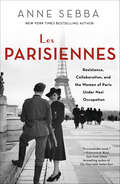
The New York Times–bestselling author explores WWII Paris history and tells the stories of how women survived—or didn’t—during the Nazi…
occupation.Paris in the 1940s was a place of fear, power, aggression, courage, deprivation, and secrets. During the occupation, the swastika flew from the Eiffel Tower and danger lurked on every corner. While Parisian men were either fighting at the front or captured and forced to work in German factories, the women of Paris were left behind where they would come face to face with the German conquerors on a daily basis, as waitresses, shop assistants, or wives and mothers, increasingly desperate to find food to feed their families as hunger became part of everyday life.When the Nazis and the puppet Vichy regime began rounding up Jews to ship east to concentration camps, the full horror of the war was brought home and the choice between collaboration and resistance became unavoidable. Sebba focuses on the role of women, many of whom faced life and death decisions every day. After the war ended, there would be a fierce settling of accounts between those who made peace with or, worse, helped the occupiers and those who fought the Nazis in any way they could.“Anne Sebba has the nearly miraculous gift of combining the vivid intimacy of the lives of women during The Occupation with the history of the time. This is a remarkable book.” —Edmund de Waal, New York Times–bestselling author“Wonderfully researched . . . puts women’s stories, and the complications of their lives under Occupation, centre stage.” —Kate Mosse, New York Times–bestselling author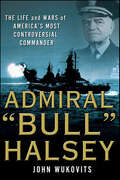
By John Wukovits. 2010
The definitive biography of America's best-known naval officer, who commanded the legendary fast carrier force during WWII.From the tragic aftermath…
of Pearl Harbor, when he fashioned America's first response to the attack, to the war's final day in Tokyo Bay when he witnessed Japan's surrender, Admiral William F. Halsey stamped a mighty imprint on the Pacific during World War II. He led or participated significantly in the Navy's first offensive strikes against the Marshall Islands and Wake Island, the Guadalcanal campaign, and the offensive toward Japan. As a commander, he never shied from engaging the enemy, but boldly entered into battle, ready for a fight. As a consequence, Halsey became the face of the Navy and its most attractive public relations phenomenon. Due to his bold tactics and quotable wit, Halsey continues to be a beloved and debated figure.In this balanced biography, historian John Wukovits illuminates the life of a man who ultimately deserves recognition as one the great naval commanders in U.S. history. Europe had Patton; the Pacific had Admiral William "the Bull" Halsey.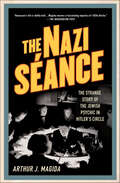
By Arthur J. Magida. 2001
World War I left Berlin, and all of Germany, devastated. Charlatans and demagogues eagerly exploited the desperate crowds. Fascination with…
the occult was everywhere – in private séances, personalized psychic readings, communions with the dead – as people struggled to escape the grim reality of their lives. In the early 1930s, the most famous mentalist in the German capital was Erik Jan Hanussen, a Jewish mind reader originally from Vienna who became so popular in Berlin that he rubbed elbows with high ranking Nazis, became close with top Storm Troopers, and even advised Hitler. Called "Europe's Greatest Oracle Since Nostradamus," Hanussen assumed he could manipulate some of the more incendiary personalities of his time just as he had manipulated his fans. He turned his occult newspaper in Berlin into a Nazi propaganda paper, personally assured Hitler that the stars were aligned in his favor, and predicted the infamous Reichstag Fire that would solidify the Nazis' grip on Germany. Seasoned with ruminations about wonder and magic (and explanations of Hanussen's tricks), The Nazi Séance is a disturbing journey into a Germany as it descends into madness—aided by a "clairvoyant" Jew oblivious to the savagery of men who pursued a Reich they fantasized would last 1,000 years.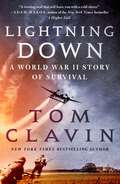
By Tom Clavin. 2021
An American fighter pilot doomed to die in Buchenwald but determined to survive.On August 13, 1944, Joe Moser set off…
on his forty-fourth combat mission over occupied France. Soon, he would join almost 170 other Allied airmen as prisoners in Buchenwald, one of the most notorious and deadly of Nazi concentration camps. Tom Clavin's Lightning Down tells this largely untold and riveting true story.Moser was just twenty-two years old, a farm boy from Washington State who fell in love with flying. During the War he realized his dream of piloting a P-38 Lightning, one of the most effective weapons the Army Air Corps had against the powerful German Luftwaffe. But on that hot August morning he had to bail out of his damaged, burning plane. Captured immediately, Moser’s journey into hell began.Moser and his courageous comrades from England, Canada, New Zealand, and elsewhere endured the most horrific conditions during their imprisonment... until the day the orders were issued by Hitler himself to execute them. Only a most desperate plan would save them.The page-turning momentum of Lightning Down is like that of a thriller, but the stories of imprisoned and brutalized airmen are true and told in unforgettable detail, led by the distinctly American voice of Joe Moser, who prays every day to be reunited with his family.Lightning Down is a can’t-put-it-down inspiring saga of brave men confronting great evil and great odds against survival.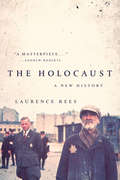
By Laurence Rees. 2017
&“This is by far the clearest book ever written about the Holocaust, and also the best at explaining its origins…
and grotesque mentality, as well as its chaotic development.&”―Antony Beevor, bestselling author of Stalingrad Laurence Rees has spent twenty-five years meeting survivors and perpetrators of the Holocaust. Now, he combines their never-before-seen eyewitness testimony with the latest academic research to create a uniquely accessible and authoritative account of the Holocaust. In The Holocaust, Rees offers an examination of the decision-making process of the Nazi state, and in the process reveals the series of escalations that cumulatively created the horror. He argues that while hatred of the Jews was always at the epicenter of Nazi thinking, what happened cannot be fully understood without considering the murder of the Jews alongside plans to kill large numbers of non-Jews, including the disabled, Sinti, and Roma, plus millions of Soviet civilians. Through a chronological, intensely readable narrative, featuring enthralling eyewitness testimony and the latest academic research, this is a compelling new account of the worst crime in history.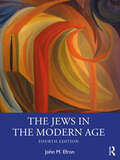
By John Efron. 2025
Providing a broad as well as a pointillist overview of modern Jewish history on a global scale from the eighteenth…
century to the present day, this book analyzes how the Jewish people have been dramatically transformed by the forces of social, economic, political, technological, and demographic change.Now in a new edition as a split volume, this second volume of a comprehensive history of the Jews includes topics such as the impact on Jewish society of the Enlightenment as well as its Jewish equivalent, the Haskalah; religious innovations in eastern and central Europe; the processes of emancipation and Jewish acculturation; the modern economic history of the Jewish people, which includes their embourgeoisement in central and western Europe, and the growth of a giant Jewish proletariat in eastern Europe; the emergence of an antisemitic politics that sought to roll back Jewish gains; and the variety of Jewish responses to those illiberal forces, especially in the form of vibrant Jewish political cultures, among them Zionism, socialism, and mass migration. Middle Eastern Jewish communities were likewise impacted by the forces of modernity in ways particular to them, and that history is addressed, as is the emergence and consolidation of the state of Israel in the wake of the Holocaust and the dissolution of Jewish communities across the Muslim world. Currently, illiberal forces are again on the march from both the right and the left, helping to foster a global upsurge of antisemitic violence and online hate.The book is useful not just for those interested in the Jews themselves but also for readers open to learning about global history from the vantage point of an ethnic minority deeply impacted by modernity, both its blessings as well as its horrors.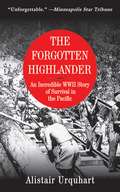
By Alistair Urquhart. 2010
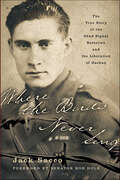
"In this riveting book, Jack Sacco tells the realistic, harrowing, at times horrifying, and ultimately triumphant tale of an American…
GI in World War II as seen through the eyes of his father, Joe Sacco--farm boy from Alabama who was flung into the chaos of Normandy and survived the terrors of the Bulge. As part of the 92nd Signal Battalion and Patton's famed Third Army, Joe and his buddies found themselves at the forefront of the Allied push through France and Germany. After more than a year of fighting, but still only twenty years old, Joe had become a hardened veteran. Yet nothing could have prepared him and his unit for the horrors behind the walls of Germany's infamous Dachau concentration camp. They were among the first 250 American troops into the camp, and it was there that they finally grasped the significance of the Allied mission...." -- Provided by publisher
By Carolyn Porter. 2017
A graphic designer's search for inspiration leads to a cache of letters and the mystery of one man's fate during…
World War II. Seeking inspiration for a new font design in an antique store in small-town Stillwater, Minnesota, graphic designer Carolyn Porter stumbled across a bundle of letters and was immediately drawn to their beautifully expressive pen-and-ink handwriting. She could not read the letters they were in French but she noticed all of them had been signed by a man named Marcel and mailed from Berlin to his family in France during the middle of World War II. As Carolyn grappled with designing the font, she decided to have one of Marcel's letters translated. Reading words of love combined with testimony of survival inside a labor camp transformed Carolyn's curiosity into an obsession to find out whether he ever returned to his beloved wife and daughters after the war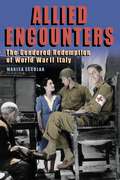
Honorable Mention for the 2019 American Association for Italian American Book Prize (20-21st Centuries)Allied Encounters uniquely explores Anglo-American and Italian…
literary, cinematic, and military representations of World War II Italy in order to trace, critique, and move beyond the gendered paradigm of redemption that has conditioned understandings of the Allied–Italian encounter. The arrival of the Allies’ global forces in an Italy torn by civil war brought together populations that had long mythologized one another, yet “liberation” did not prove to be the happy ending touted by official rhetoric. Instead of a “honeymoon,” the Allied–Italian encounter in cities such as Naples and Rome appeared to be a lurid affair, where the black market reigned supreme and prostitution was the norm. Informed by the historical context as well as by their respective traditions, these texts become more than mirrors of the encounter or generic allegories. Instead, they are sites in which to explore repressed traumas that inform how the occupation unfolded and is remembered, including the Holocaust, the American Civil War, and European colonialism, as well as individual traumatic events like the massacre of the Fosse Ardeatine and the mass civilian rape near Rome by colonial soldiers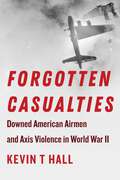
Sheds new light on the mistreatment of downed airmen during World War II and the overall relationship between the air…
war and state-sponsored violence.Throughout the vast expanse of the Pacific, the remoteness of Southeast Asia, and the rural and urban communities in Nazi-occupied Europe, more than 120,000 American airmen were shot down over enemy territory during World War II, thousands of whom were mistreated and executed. The perpetrators were not just solely fanatical soldiers or Nazi zealots but also ordinary civilians triggered by the death and devastation inflicted by the war. In Forgotten Casualties, author Kevin T Hall examines Axis violence inflicted on downed Allied airmen during this global war.Compared with all other armed conflicts, World War II exhibited the most widespread and ruthless violence committed against airmen. Flyers were deemed guilty because of their association with the Allied air forces, and their fate remained in the hands of their often-hostile captors. Axis citizens angered by the devastation inflicted by the war, along with the regimes’ consent and often encouragement of citizens to take matters into their own hands, resulted in thousands of Allied flyers’ being mistreated and executed by enraged civilians. Written to help advance the relatively limited discourse on the mistreatment against flyers in World War II, Forgotten Casualties is the first book to analyze the Axis violence committed against Allied airmen in a comparative, international perspective. Effectively comparing and contrasting the treatment of POWs in Germany with that of their counterparts in Japan, Hall’s thorough analysis of rarely seen primary and secondary sources sheds new light on the largely overlooked complex relationship among the air war, propaganda, the role of civilians, and state-sponsored terror during the radicalized conflict. Sources include postwar trial testimonies, Missing Air Crew Reports (MACR), Escape and Evasion reports, perpetrators’ explanations and rationalizations for their actions, extensive judicial sources, transcripts of court proceedings, autopsy reports, appeals for clemency, and justifications for verdicts.Drawing heavily on airmen’s personal accounts and the testimonies of both witnesses and perpetrators from the postwar crimes trials, Forgotten Casualties offers a new narrative of this largely overlooked aspect of Axis violence.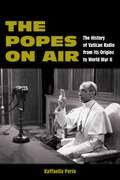
The story of the origin of Vatican Radio provides a unique look at the history of World War IIThe book…
offers the first wide-ranging study on the history of Vatican Radio from its origins (1931) to the end of Pius XII’s pontificate (1958) based on unpublished sources. The opening of the Secret Vatican Archives on the records regarding Pius XII will shed light on the most controversial pontificate of the 20th century. Moreover, the recent rearrangement of the Vatican media provided the creation of a multimedia archive that is still in Fieri.This research is an original point of view on the most relevant questions concerning these decades: the relation of the Catholic Church with the Fascist regimes and Western democracies; the attitude toward anti-Semitism and the Shoah in Europe, and in general toward the total war; the relationship of the Holy See with the new media in the mass society; the questions arisen in the after-war period such as the Christian Democratic Party in Italy; the new role of women; and anti-communism and the competition for the consensus in the social and moral order in a secularized society.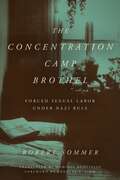
Discover the chilling untold story of sexual forced labor in Nazi concentration campsIn his seminal work, The Concentration Camp Brothel,…
Robert Sommer reveals the hidden horrors of sexual forced labor within the SS camp system, a subject long overshadowed and seldom acknowledged in the discourse on the Holocaust.Through his rigorous examination of over seventy archives and poignant interviews with more than thirty survivors, including former visitors of camp brothels, Sommer paints a vivid and harrowing picture of the atrocities committed. This book is the first to offer a comprehensive exploration of the establishment, operation, and profound impact of brothels in Nazi concentration camps.Sommer’s research meticulously details the brothels’ integration into the concentration camp system, their role in the Nazi exploitation of bodies for control and profit, and the complex reactions of the prisoner society to these establishments. He explores the desperate survival strategies employed by the women forced into sexual labor and the chilling motivations of their exploiters.The book also places the tragedy of camp brothels in the broader context of sexual violence under Nazi rule, making a critical connection between these acts of exploitation and the overall history of the Holocaust. This updated English edition incorporates new findings and perspectives since the original German publication in 2009, providing a more comprehensive understanding of the subject. The foreword by Annette F. Timm adds further context and contemporary analysis, enhancing the book’s relevance and depth.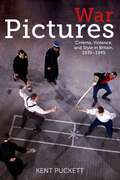
In this original and engaging work, author Kent Puckett looks at how British filmmakers imagined, saw, and sought to represent…
its war during wartime through film. The Second World War posed unique representational challenges to Britain’s filmmakers. Because of its logistical enormity, the unprecedented scope of its destruction, its conceptual status as total, and the way it affected everyday life through aerial bombing, blackouts, rationing, and the demands of total mobilization, World War II created new, critical opportunities for cinematic representation.Beginning with a close and critical analysis of Britain’s cultural scene, War Pictures examines where the historiography of war, the philosophy of violence, and aesthetics come together. Focusing on three films made in Britain during the second half of the Second World War—Michael Powell and Emeric Pressburger’s The Life and Death of Colonel Blimp (1943), Lawrence Olivier’s Henry V (1944), and David Lean’s Brief Encounter (1945)—Puckett treats these movies as objects of considerable historical interest but also as works that exploit the full resources of cinematic technique to engage with the idea, experience, and political complexity of war. By examining how cinema functioned as propaganda, criticism, and a form of self-analysis, War Pictures reveals how British filmmakers, writers, critics, and politicians understood the nature and consequence of total war as it related to ideas about freedom and security, national character, and the daunting persistence of human violence. While Powell and Pressburger, Olivier, and Lean developed deeply self-conscious wartime films, their specific and strategic use of cinematic eccentricity was an aesthetic response to broader contradictions that characterized the homefront in Britain between 1939 and 1945. This stylistic eccentricity shaped British thinking about war, violence, and commitment as well as both an answer to and an expression of a more general violence.Although War Pictures focuses on a particularly intense moment in time, Puckett uses that particularity to make a larger argument about the pressure that war puts on aesthetic representation, past and present. Through cinema, Britain grappled with the paradoxical notion that, in order to preserve its character, it had not only to fight and to win but also to abandon exactly those old decencies, those “sporting-club rules,” that it sought also to protect.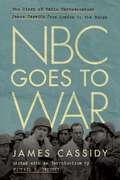
The diary of radio correspondent James Cassidy presents a unique view of World War II as this reporter followed the…
Allied armies into Nazi Germany.James Joseph Cassidy was one of 362 American journalists accredited to cover the European Theater of Operations between June 7, 1944, and the war’s end. Radio was relatively new, and World War II was its first war. Among the difficulties facing historians examining radio reporters during that period is that many potential primary documents—their live broadcasts—were not recorded. In NBC Goes to War, Cassidy’s censored scripts alongside his personal diary capture a front-line view during some of the nastiest fighting in World War II as told by a seasoned NBC reporter.James Cassidy was ambitious and young, and his coverage of World War II for the NBC radio network notched some notable firsts, including being the first to broadcast live from German soil and arranging the broadcast of a live Jewish religious service from inside Nazi Germany while incoming mortar and artillery shells fell 200 yards away. His diary describes how he gathered news, how it was censored, and how it was sent from the battle zone to the United States. As radio had no pictures, reporters quickly developed a descriptive visual style to augment dry facts. All of Cassidy’s stories, from the panic he felt while being targeted by German planes to his shock at the deaths of colleagues, he told with grace and a reporter’s lean and engaging prose.Providing valuable eyewitness material not previously available to historians, NBC Goes to War tells a “bottom-up” narrative that provides insight into war as fought and chronicled by ordinary men and women. Cassidy skillfully placed listeners alongside him in the ruins of Aachen, on icy back roads crawling with spies, and in a Belgian bar where a little girl wailed “Les Américains partent!” when Allied troops retreated to safety, leaving the town open to German re-occupation. With a journalistic eye for detail, NBC Goes to War unforgettably portrays life in the press corps. This newly uncovered perspective also helps balance the CBS-heavy radio scholarship about the war, which has always focused heavily on Edward R. Murrow and his “Murrow’s Boys.”
By Peter Jason Banki. 2018
This book is concerned with the aporias, or impasses, of forgiveness, especially in relation to the legacy of the crimes…
against humanity perpetrated by the Nazis and their collaborators during World War II. Banki argues that, while forgiveness of the Holocaust is and will remain impossible, we cannot rest upon that impossibility. Rather, the impossibility of forgiveness must be thought in another way. In an epoch of “worldwidization,” we may not be able simply to escape the violence of scenes and rhetoric that repeatedly portray apology, reconciliation, and forgiveness as accomplishable acts. Accompanied by Jacques Derrida’s thought of forgiveness of the unforgivable, and its elaboration in relation to crimes against humanity, the book undertakes close readings of literary, philosophical, and cinematic texts by Simon Wiesenthal, Jean Améry, Vladimir Jankélévitch, Robert Antelme and Eva Mozes Kor. These texts contend with the idea that the crimes of the Nazis are inexpiable, that they lie beyond any possible atonement or repair. Banki argues that the juridical concept of crimes against humanity calls for a thought of forgiveness—one that would not imply closure of the infinite wounds of the past. How could such a forgiveness be thought or dreamed? Banki shows that if today we cannot simply escape the “worldwidization” of forgiveness, then it is necessary to rethink what forgiveness is, the conditions under which it supposedly takes place, and especially its relation to justice.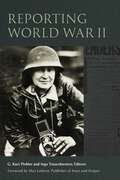
By G. Kurt Piehler and Ingo Trauschweizer. 2023
This set of essays offers new insights into the journalistic process and the pressures American front-line reporters experienced covering World…
War II. Transmitting stories through cable or couriers remained expensive and often required the cooperation of foreign governments and the American armed forces. Initially, reporters from a neutral America documented the early victories by Nazi Germany and the Soviet invasion of Finland. Not all journalists strove for objectivity. During her time reporting from Ireland, Helen Kirkpatrick remained a fierce critic of that country’s neutrality. Once the United States joined the fight after the Japanese attack on Pearl Harbor, American journalists supported the struggle against the Axis powers, but this volume will show that reporters, even when members of the army sponsored newspaper, Stars and Stripes were not mere ciphers of the official line.African American reporters Roi Ottley and Ollie Stewart worked to bolster the morale of Black GIs and undermined the institutional racism endemic to the American war effort. Women front-line reporters are given their due in this volume examining the struggles to overcome gender bias by describing triumphs of Thérèse Mabel Bonney, Iris Carpenter, Lee Carson, and Anne Stringer.The line between public relations and journalism could be a fine one as reflected by the U.S. Marine Corps’ creating its own network of Marine correspondents who reported on the Pacific island campaigns and had their work published by American media outlets. Despite the pressures of censorship, the best American reporters strove for accuracy in reporting the facts even when dependent on official communiqués issued by the military. Many wartime reporters, even when covering major turning points, sought to embrace a reporting style that recorded the experiences of average soldiers. Often associated with Ernie Pyle and Bill Mauldin, the embrace of the human-interest story served as one of the enduring legacies of the conflict.Despite the importance of American war reporting in shaping perceptions of the war on the home front as well as shaping the historical narrative of the conflict, this work underscores how there is more to learn. Readers will gain from this work a new appreciation of the contribution of American journalists in writing the first version of history of the global struggle against Nazi Germany, imperial Japan, and fascist Italy.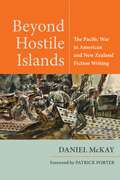
WINNER, JAVIER COY BIENNIAL RESEARCH AWARD, BEST MONOGRAPHOffers a fascinating window into how the fraught politics of apology in the…
East Asian region have been figured in anglophone literary fiction.The Pacific War, 1941-1945, was fought across the world’s largest ocean and left a lasting imprint on anglophone literary history. However, studies of that imprint or of individual authors have focused on American literature without drawing connections to parallel traditions elsewhere. Beyond Hostile Islands contributes to ongoing efforts by Australasian scholars to place their national cultures in conversation with those of the United States, particularly regarding studies of the ideologies that legitimize warfare. Consecutively, the book examines five of the most significant historical and thematic areas associated with the war: island combat, economic competition, internment, imprisonment, and the atomic bombing of Hiroshima and Nagasaki.Throughout, the central issue pivots around the question of how or whether at all New Zealand fiction writing differs from that of the United States. Can a sense of islandness, the ‘tyranny of distance,’ Māori cultural heritage, or the political legacies of the nuclear-free movement provide grounds for distinctive authorial insights? As an opening gambit, Beyond Hostile Islands puts forward the term ‘ideological coproduction’ to describe how a territorially and demographically more minor national culture may accede to the essentials of a given ideology while differing in aspects that reflect historical and provincial dimensions that are important to it. Appropriately, the literary texts under examination are set in various locales, including Japan, the Solomon Islands, New Zealand, New Mexico, Ontario, and the Marshall Islands. The book concludes in a deliberately open-ended pose, with the full expectation that literary writing on the Pacific War will grow in range and richness, aided by the growth of Pacific Studies as a research area.
By Martha L. Moore-Keish and Christian T. Collins Winn. 2019
Building on recent engagements with Barth in the area of theologies of religion, Karl Barth and Comparative Theology inaugurates a…
new conversation between Barth’s theology and comparative theology. Each essay brings Barth into conversation with theological claims from other religious traditions for the purpose of modeling deep learning across religious borders from a Barthian perspective. For each tradition, two Barth-influenced theologians offer focused engagements of Barth with the tradition’s respective themes and figures, and a response from a theologian from that tradition then follows. With these surprising and stirringly creative exchanges, Karl Barth and Comparative Theology promises to open up new trajectories for comparative theology.Contributors: Chris Boesel, Francis X. Clooney, Christian T. Collins Winn, Victor Ezigbo, James Farwell, Tim Hartman, S. Mark Heim, Paul Knitter, Pan-chiu Lai, Martha L. Moore-Keish, Peter Ochs, Marc Pugliese, Joshua Ralston, Anantanand Rambachan, Randi Rashkover, Kurt Richardson, Mun’im Sirry, John Sheveland, Nimi Wariboko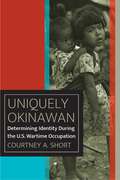
Uniquely Okinawan explores how American soldiers, sailors, and Marines considered race, ethnicity, and identity in the planning and execution of…
the wartime occupation of Okinawa, during and immediately after the Battle of Okinawa, 1945–46.